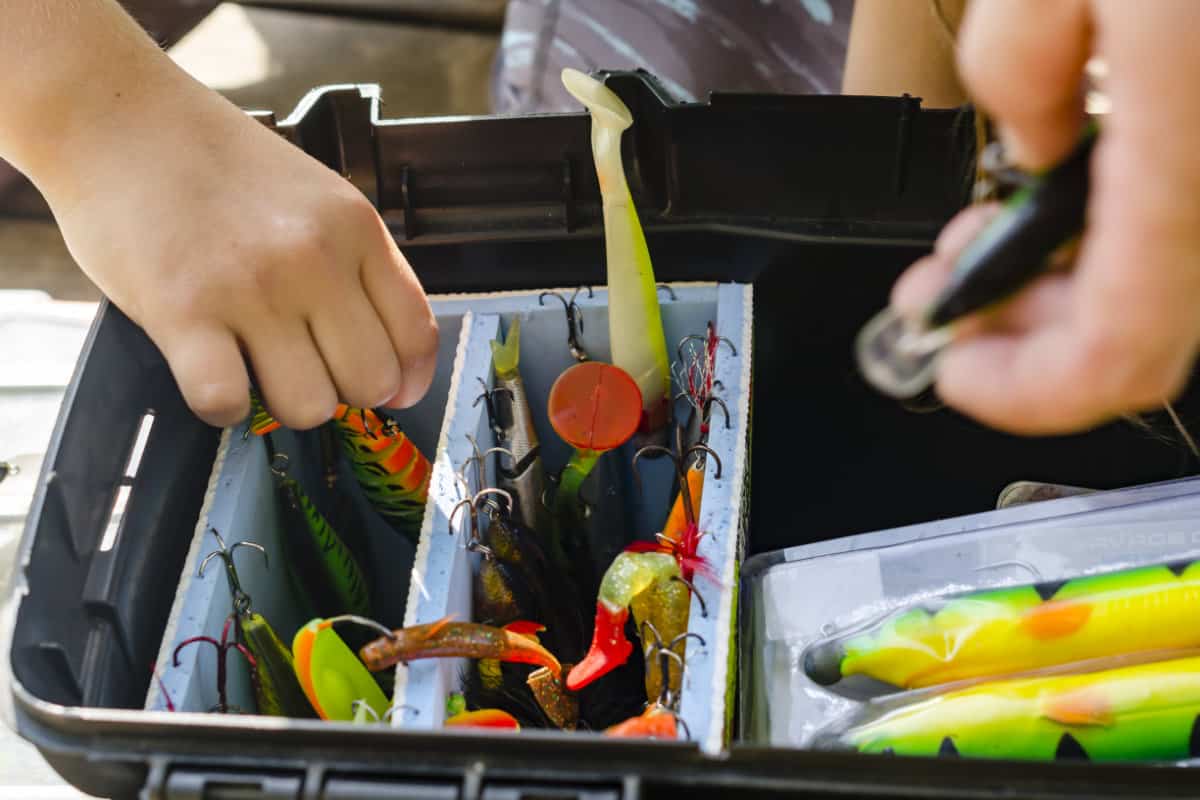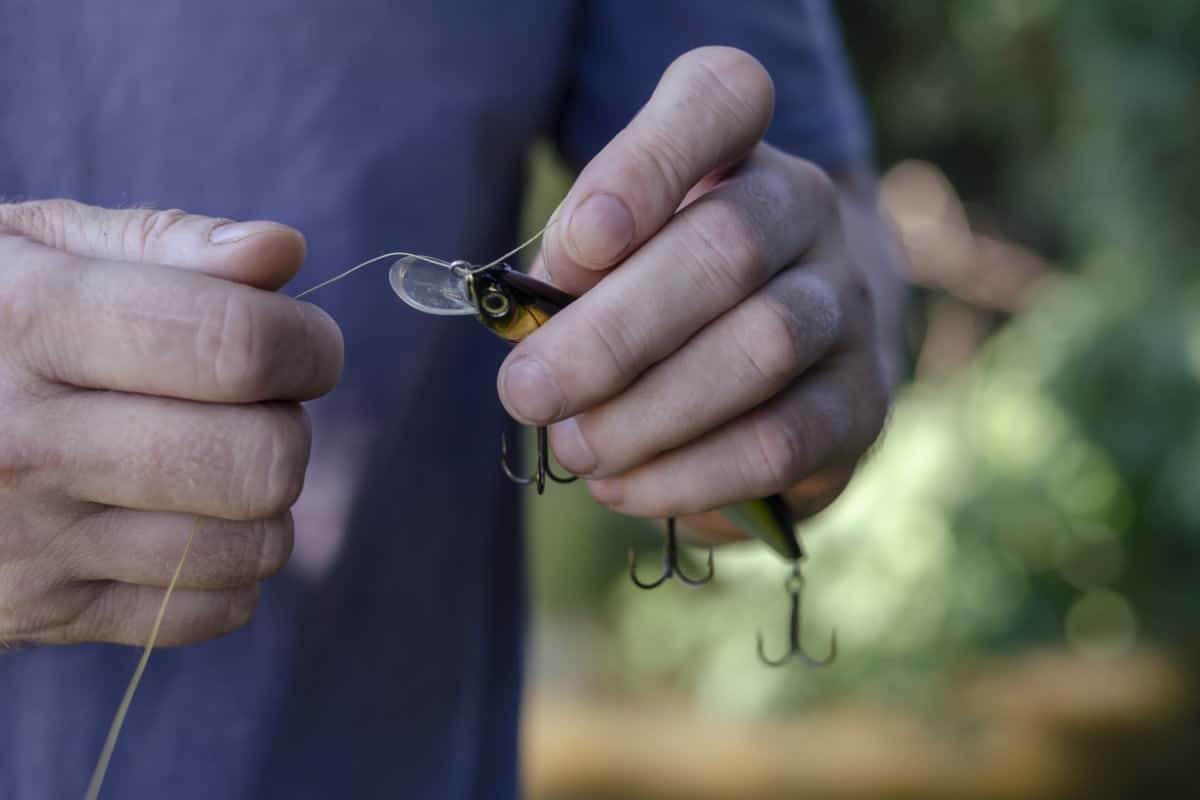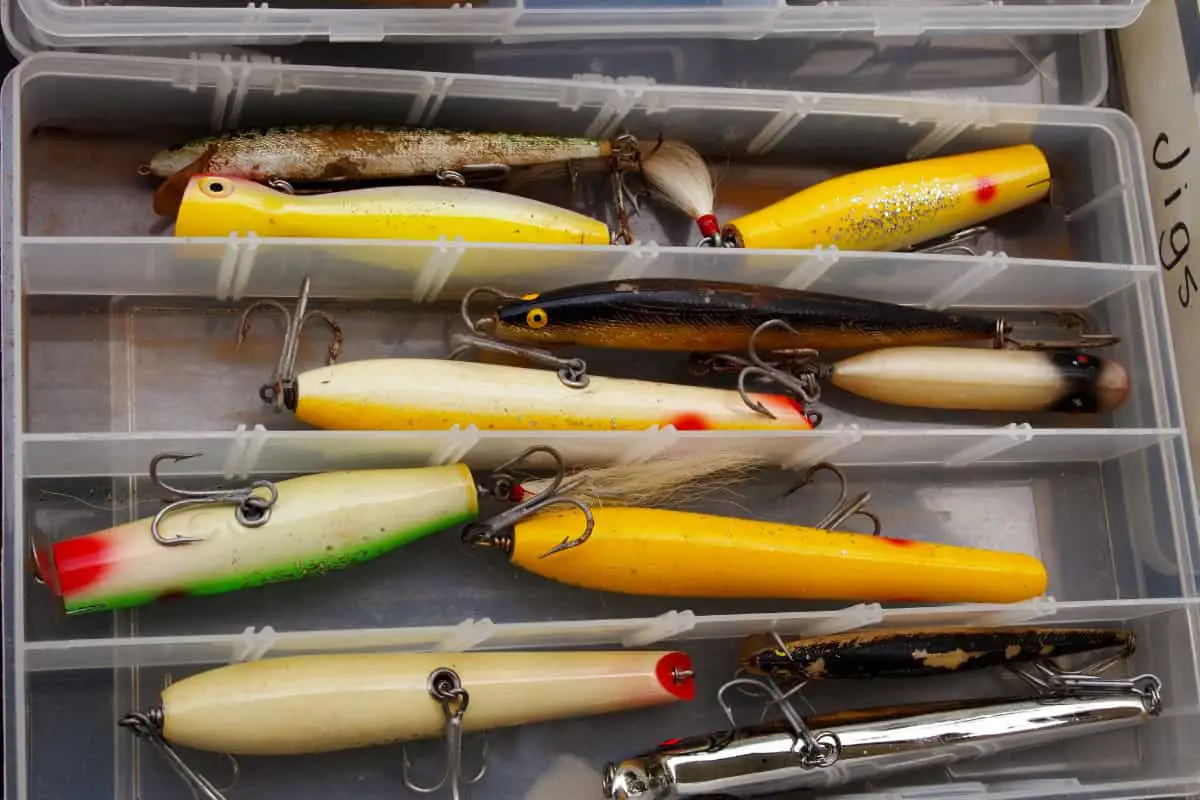Are you tired of using bait and waiting for hours with no bites while surf fishing? It might be time to switch to lures.
They can catch fish more effectively and give the angler a more active and engaging experience. Using lures for surf fishing has its pros and cons, but with the right techniques and knowledge, it can become your preferred method.
This article will explore the benefits of using lures and some drawbacks. We’ll also go over how to choose the right lure for your desired catch, how to rig it properly, techniques for using lures in the surf, and tips for successful surf fishing with lures.
With these insights, you’ll be able to elevate your game and increase your chances of catching that trophy fish you’ve been dreaming about.
Pros of Using Lures for Surf Fishing
Using lures for surf fishing![]() can be a great way to mimic the movements of real bait and entice fish to bite, making it an exciting and effective method. The benefits of using lures include their versatility, as they come in various shapes, sizes, and colors that can imitate different types of baitfish.
can be a great way to mimic the movements of real bait and entice fish to bite, making it an exciting and effective method. The benefits of using lures include their versatility, as they come in various shapes, sizes, and colors that can imitate different types of baitfish.
Lures also allow anglers to cover more water quickly than live bait, enabling them to locate fish faster. Additionally, some lures have built-in rattles or scent attractants that can lure fish from afar.
However, using lures for surf fishing also has drawbacks. It requires more skill and experience than using live bait because anglers must know how to work the lure effectively.
Moreover, lures are more expensive than live baits and require replacing when damaged or lost. In contrast, live baits are readily available in most shops without much hassle.
Despite these drawbacks, many experienced anglers prefer using lures over live bait for surf fishing because of their effectiveness. Lures can catch various species, such as striped basses and bluefishes, which might not take on other types of baits like clams or worms.
Using a lure allows you to experiment with different techniques, such as retrieving speed or changing the depth at which you present your bait before finding what works best.
While there are alternatives like natural baits for surf fishing, utilizing lures is popular among seasoned fishermen due to its effectiveness in catching numerous species found in waters near shorelines.
Although it may require more skills and investment than natural baits, learning how to use them correctly will result in better results over time – making it worth trying out if you’re considering upgrading your angling game!
Keep reading further for an overview of the cons related to this type of approach next!
Cons of Using Lures for Surf Fishing
Even so, opting for artificial bait in the ocean may only sometimes lead to the most successful catches. While lures are popular among surf fishermen, they have several disadvantages. Here are some reasons why you might want to consider an alternative:
– Limited effectiveness: Lures can be less effective than live bait when attracting fish in certain conditions. For example, fish may need help spotting their lure if the water is clear or there is little current. Additionally, certain fish species may prefer live prey over artificial lures.
– Cost: Buying lures can add up quickly if you constantly lose them due to snags or break-offs. It’s also important to note that not all lures are created equal; some may be more expensive but not necessarily more effective than cheaper alternatives.
– Environmental impact: Many lures contain plastic or metal components that can harm marine life if they end up discarded in the water. If you’re concerned about reducing your environmental impact while fishing, using live bait or biodegradable alternatives may be better.
While there are benefits to using lures for surf fishing (as discussed earlier), it’s important to weigh these against the potential drawbacks before deciding on what type of bait to use.
Alternatives like natural baits (such as sand crabs or clams) and biodegradable options (such as cornstarch-based plastics) can be just as effective at catching fish while minimizing negative impacts.
When choosing the right lure for surf fishing, consider factors such as water clarity and depth, target species of fish, and personal preferences regarding casting distance and retrieve speed.
By understanding both the advantages and disadvantages of using artificial baits in this setting, you’ll be better equipped to make an informed decision when planning your next trip out on the waves.
Choosing the Right Fishing Lure

Remember a few key points when choosing the right lure for surf fishing. First and foremost, you want to match the lure to the type of fish you’re targeting.
Additionally, it’s important to consider the water conditions you’ll be fishing in – rougher water may require a different type of lure than calm waters.
Finally, understanding the action of your chosen lure can make all the difference in enticing fish to bite. By considering these factors, you’ll be well on your way to catching more fish on your next surf fishing trip.
Matching the Lure to the fish
Matching the right lure to the fish you’re targeting is crucial for success in surf fishing. Here are some tips to help you match your lure to the fish:
– Consider the best lure colors: The color of a lure can play a big role in whether or not a fish will bite. Different colors work better in certain water conditions, so it’s important to consider what color will stand out the most based on where you’re fishing.
– Adjusting lure weight: The weight of your lure can also make a difference in attracting bites from certain types of fish. Heavier lures are better suited for larger, stronger fish, while lighter lures work well for smaller ones.
– Know the type of baitfish that are present: Fish tend to feed on specific types of baitfish, so using a lure that looks like their natural prey can increase your chances of getting a bite.
Considering water conditions is also important when choosing your gear and tackle.
Considering Water Conditions
To increase your chances of a successful catch while surf fishing, you need to take into account the ever-changing water conditions and adjust accordingly. One important consideration is surf fishing bait![]() alternatives.
alternatives.
When the water is murky or rough, using live bait might not be as effective as using lures. In these conditions, it’s best to use brightly colored lures that can be seen easily.
It’s also important to match the size and type of lure with the size and species of fish you’re targeting. In addition to choosing the right lure, adjusting lure tactics can also improve your chances of success in different water conditions.
For instance, when fishing in calm waters with little current, slow retrieves and subtle movements are more likely to attract fish.
Conversely, faster retrieves and erratic movements can mimic struggling prey and entice strikes when fishing in strong currents or choppy waters.
Understanding how different factors affect lure action can help you make informed decisions about which lures to use and how to present them effectively.
Considering both surf fishing bait alternatives and adjusting your lure tactics based on water conditions will increase your chances of hooking a big one.
Understanding the lure’s action is another key factor in successful surf fishing which we’ll discuss next.
Understanding the Lure’s Action
Get ready to learn about the lure’s action and how it can make all the difference in your success while casting from the shore. Understanding lure action is crucial to catching fish, especially when surf fishing.
Lures are designed to mimic prey and attract fish by creating movement in the water that catches their attention. Here are some benefits of lures and what you should know about understanding lure action:
1. Lures come in various shapes and sizes, allowing you to choose one that matches the type of baitfish or prey that fish in your area typically feed on.
2. The action of a lure refers to its movement in the water, which can be controlled by how you retrieve it. Some lures simulate swimming or darting motions that entice fish to strike.
3. Understanding how different types of lures move through the water is essential for selecting one that best suits your fishing conditions.
Now that you understand more about the benefits of lures and their actions, it’s time to dive into rigging your lure for optimal performance.
Rigging Your Lures

Start by looping your fishing line through the lure’s eyelet, making sure it’s secure and won’t slip off while casting. Dressing up your lure with the right rigging is crucial in attracting fish.
There are various types of lures that you can use for surf fishing, but some of the most popular ones include jigs, plugs, and spoons. When it comes to rigging your lure, you want to consider factors such as the type of baitfish present in the water and the depth at which they swim.
For example, a jig with a heavy sinker will work best if you’re targeting bottom-dwelling fish like flounder or halibut. A swimming plug with treble hooks might be more effective if you go after faster-swimming species like mackerel or striped bass. It’s also important to adjust your rigging depending on how strong the surf is.
In rough conditions where big waves are crashing onto shorelines, you’ll need to use heavier weights and stronger lines to keep your lure from getting swept away. On calmer days when there’s less current, lighter rigs will suffice.
Rigging your lure correctly can make all the difference in catching fish while surf fishing. But once you’ve got everything set up just right, it’s time to focus on using different techniques to attract those elusively catches out in the waves without scaring them off.
Techniques for Using Lures in the Surf
Once you’ve rigged your lure properly, you’ll want to master a few different techniques for reeling in those big catches from the waves.
First and foremost, casting distance is critical. You want to be able to cast far enough into the surf that your lure can reach where the fish are feeding. Practice your casting technique until you’re confident in your ability to hit those sweet spots.
Another important factor is retrieving speed. The key here is to vary your retrieve until you find what’s working best on any given day. Sometimes, a slow and steady retrieve will be most effective; other times, a fast and erratic retrieve will entice more bites. Experiment with different speeds until you find what works best.
When using lures in the surf, it’s also important to pay close attention to the water conditions and adjust accordingly. Suppose there’s heavy surf or strong currents, for example. In that case, you may need to use a heavier lure or adjust your retrieval speed accordingly.
As you become more experienced with using lures in the surf, remember that there’s always room for improvement. Keep experimenting and refining your technique until you consistently bring home trophy-worthy catches. And remember tips for successful surf fishing with lures – they’ll help take your skills even further!
What Are the Best Types of Lures to Use for Surf Fishing?
When it comes to using lures for surf fishing, some of the best options include topwater plugs, metal spoons, and soft plastic baits. These lures are great for targeting a variety of saltwater species such as striped bass, bluefish, and red drum in the surf.
Tips for Successful Surf Fishing With Lures
Now that you’ve learned some effective techniques for using lures in the surf, it’s time to discuss tips for successful surf fishing with lures.
First and foremost, casting technique is crucial when using lures in the surf. A good cast can mean the difference between catching a fish or getting nothing at all. When casting, make sure to aim toward areas where fish are likely to be feeding, such as near sandbars or troughs.
In addition to proper casting technique, the retrieving method is also important. Varying your retrieve speed and pattern can entice different types of fish to bite.
For example, a slow and steady retrieve may work well for larger predatory fish like striped bass or bluefish, while a faster retrieve with occasional pauses may be more enticing for smaller baitfish species.
Another tip for successful surf fishing with lures is to pay attention to environmental factors such as tide changes and water clarity. As the tide moves in and out, it can bring different types of baitfish closer to shore, which can attract larger predatory fish.
Additionally, clearer water conditions may require more natural-looking lures, such as soft plastic imitations of shrimp or sand crabs.
Lastly, feel free to experiment with different types of lures and colors until you find what works best in your local area. Some popular lure options for surf fishing include topwater plugs, bucktail jigs, and soft plastics.
By trying out new techniques and experimenting with different lure styles, you’ll increase your chances of success on your next surf fishing trip!
Conclusion
Overall, using lures for surf fishing can be a great option. They offer versatility in terms of color, size, and shape, allowing you to mimic the natural prey of the fish you’re targeting. Additionally, they can be more cost-effective than live bait in the long run.
However, there are also some drawbacks to using lures. They require more skill and knowledge to use effectively compared to live bait. Additionally, certain species may prefer live bait over lures.
To maximize your success with lures in the surf, it’s important to choose the right lure for the conditions and species you’re targeting. Proper rigging and technique can also make all the difference.
Remember that patience is key when it comes to surf fishing – don’t give up if you don’t get any bites right away.
In conclusion, while using lures for surf fishing may sometimes be foolproof, they certainly have their benefits if used correctly. Practice makes perfect when it comes to fishing, so keep trying different techniques until you find one that works best for you. As they say, Rome wasn’t built in a day!

